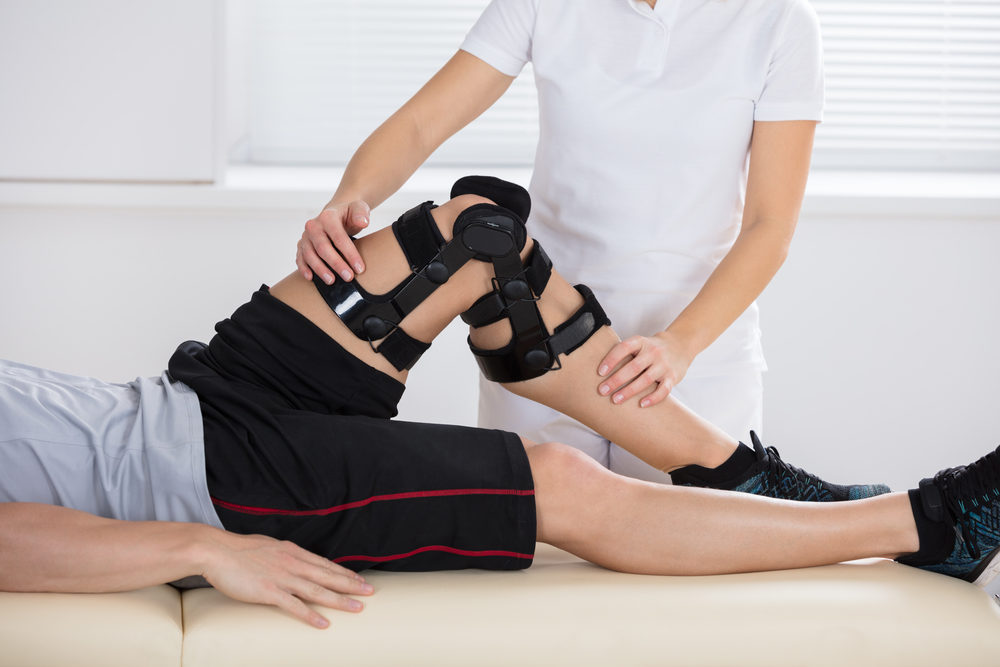An MCL tear or rupture can be a debilitating injury, but it often responds well to conservative treatment options like physical therapy.
The medial collateral ligament (MCL) runs along the inside of the knee and connects the shinbone, or tibia, to the femur, or thighbone. This important ligament allows you to rotate your knee. It also stabilizes the joint by preventing it from bending too far inward.
The MCL is susceptible to sprains or tears, especially if a blow to the outside of the knee stretches it beyond its normal range of motion. MCL injuries are seen most often in athletes who play contact sports, but they can also be caused by an accident or a sudden twisting of the knee while skiing.
If you’ve ruptured your MCL, you’ll likely hear a popping sound in the knee. A tear will also cause pain, swelling, and tenderness. The knee may feel stiff, making it painful to straighten or bend the joint. An MCL injury creates a feeling of instability as well, so it may be difficult to put weight on the knee.
MCL injuries are grouped into three grades, each with a different level of severity. Treatment depends on the type of MCL trauma, but most can be successfully overcome with conservative therapies.
The Types of MCL Injuries
The type of MCL injury dictates the treatment and recovery time. Here’s a rundown of three categories of MCL damage:
Grade I: A Grade I MCL injury refers to a sprain of the ligament, but not a tear. This type of MCL injury heals within a few weeks with conservative therapy centered on resting the joint, reducing swelling with ice packs; and taking anti-inflammatory medications. Patients can strengthen the muscles surrounding the knee with exercises, including:
- Hamstring Curl: Stand straight on one leg and tighten the stomach muscles. Bend the other knee and slowly raise the heel toward the buttocks. Hold for 30 seconds and repeat with the other leg. You may want to hold onto a chair for balance, if needed.
- Wall Slide: With a straight back and feet flat on the floor, stand against a wall. Slide down slowly, ending in a squatting position. Hold for 30 seconds, and then rise. Repeat 10 to 15 times.
Grade 2: In a Grade 2 MCL injury, the ligament is partially torn. Treatment is similar to a Grade I trauma, but patients may be advised to stabilize the knee with a brace while they recover.
Grade 3: The most severe MCL injury, a Grade 3 MCL trauma means the ligament is completely torn. It also requires a longer recovery time, typically about three months. In addition to wearing a brace or taking pressure of the knee with crutches, you’ll undergo physical therapy to increase the joint’s range of motion. You can also start walking and pedaling on a stationary bike when the pain subsides.
Is Surgery Necessary?
A total rupture of the MCL usually doesn’t require surgery. Only in cases where the tear hasn’t healed after conservative therapy or other knee ligaments are damaged is surgery recommended. Surgery to repair a torn MCL involves stitching the ends of the ligament together or reattaching it to the bone.
If you suspect you’ve injured your MCL, the doctors at New York Bone & Joint Specialists can diagnose your condition with a thorough physical exam. We’ll also take X-rays to check for any broken bones as well as an MRI to get a closer look at the ligaments of the knee. We’ll prescribe a therapy program so you can get back to the activities you enjoy as soon as possible. Contact us today for an appointment.




